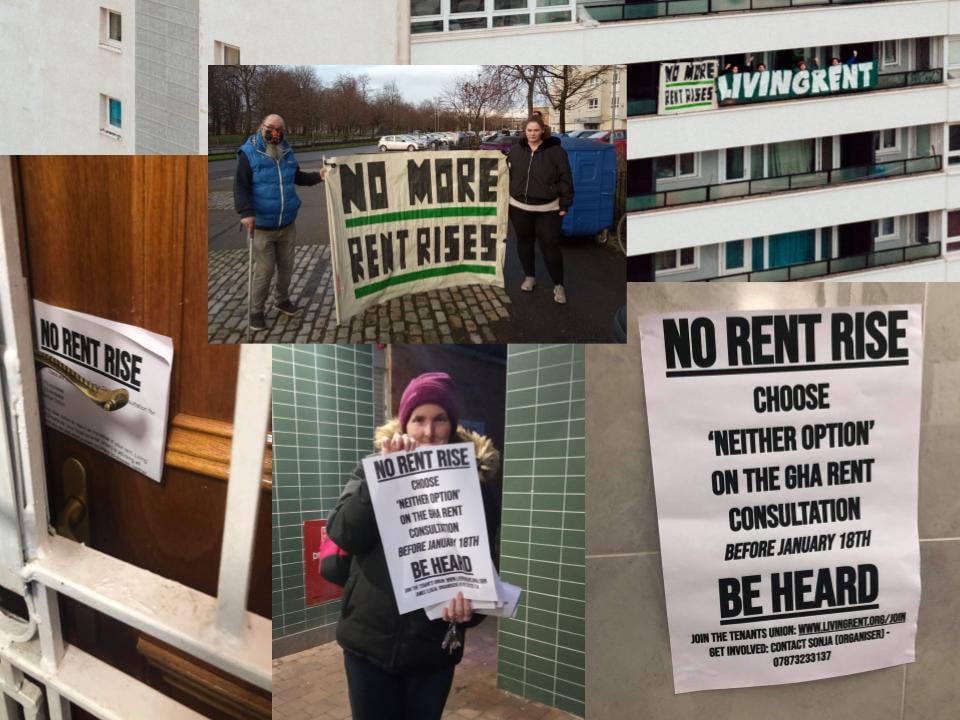Government's Social Housing Rent Freeze: Impact On Private Rental Sector

Table of Contents
Increased Demand in the Private Rental Sector
A rent freeze in social housing creates a domino effect, significantly impacting the private rental sector. The primary consequence is a surge in demand for private rental properties.
Displacement of Tenants
A rent freeze, while beneficial for existing social housing tenants, can displace others. Those seeking affordable housing are pushed into the already competitive private rental market. This leads to:
- Increased competition among private renters: More applicants vying for fewer available properties creates a highly competitive rental landscape.
- Potential for higher rents in the private sector due to increased demand: Basic supply and demand economics dictate that increased demand with limited supply drives up prices. Landlords can capitalize on this heightened competition.
- Exacerbation of existing housing shortages: The increased demand further strains an already tight housing market, making finding affordable housing even more challenging.
Limited Supply & Rising Prices
The influx of new renters into the private sector, without a corresponding increase in available properties, leads to a significant increase in rental prices. This is exacerbated by:
- Landlords may raise rents to capitalize on higher demand: With more potential tenants, landlords have more leverage to increase rental rates.
- Increased competition among landlords can also influence rent increases: Even landlords who might not initially raise rents may feel pressured to do so to remain competitive.
- Reduced affordability for low and middle-income renters: The combined effect of increased demand and reduced supply pushes rental costs beyond the reach of many low and middle-income households.
Landlord Response to the Rent Freeze
The government's social housing rent freeze also impacts landlord behavior and investment decisions.
Reduced Investment in Social Housing
Rent freezes significantly disincentivize investment in social housing. Landlords face lower returns, making investment less attractive. This results in:
- Lower returns on investment for social housing landlords: Reduced rental income directly impacts profitability and return on investment.
- Less incentive for new developments or property upgrades: Landlords are less likely to invest in new social housing projects or maintain existing properties.
- Potential deterioration of existing social housing stock: Lack of investment leads to deferred maintenance, potentially worsening the quality of available social housing.
Shifting Investment to Private Rental
Faced with reduced profitability in social housing, landlords may shift their investment strategies towards the private rental market, where they have greater control over rental prices and profits. This can lead to:
- Increased development of private rental properties: Investment will flow to areas where returns are more certain.
- Potential for increased concentration of ownership in the private rental sector: A few large landlords could dominate the market.
- Further imbalance between social and private housing availability: The disparity between the two sectors widens, leaving fewer affordable options for low-income renters.
Long-Term Implications for Housing Affordability
The ripple effects of a social housing rent freeze have profound long-term implications for housing affordability and market stability.
Widening Affordability Gap
Without complementary policies to address affordability in the private rental sector, a social housing rent freeze can exacerbate the existing affordability crisis. This leads to:
- Increased inequality in access to housing: The gap between those who can afford private rent and those who cannot grows.
- Greater financial strain on low and middle-income households: A larger proportion of their income is dedicated to rent, leaving less for other necessities.
- Potential for increased homelessness: Those unable to afford either social or private rent face a greater risk of homelessness.
Impact on Housing Market Stability
The interplay between increased demand in the private sector and reduced investment in social housing creates instability and volatility in the overall housing market. This can manifest as:
- Increased rent inflation in specific areas: High demand in certain localities drives up rents disproportionately.
- Potential for speculative investment in the private rental market: Investors may enter the market, further driving up prices.
- Difficulty in implementing effective housing policies: The interconnectedness of social and private housing makes effective policy intervention more challenging.
Conclusion
The government's social housing rent freeze, while intending to address affordability concerns within the social housing sector, can create unintended consequences for the private rental market. Increased demand, reduced supply, and altered landlord investment strategies contribute to rising rental costs and exacerbate the existing housing affordability crisis. Understanding these ripple effects is crucial for policymakers to develop comprehensive housing strategies that address the needs of all renters. To ensure sustainable and equitable housing solutions, policymakers should consider the broader impact of social housing rent freezes and implement complementary policies that support both social and private rental sectors, ultimately improving the affordability and stability of the overall housing market. Further research into the long-term effects of a social housing rent freeze is needed to inform future policy decisions related to rental markets and housing affordability.

Featured Posts
-
 Keown Claims Arsenal Have Secretly Signed A New Striker
May 28, 2025
Keown Claims Arsenal Have Secretly Signed A New Striker
May 28, 2025 -
 Arsenals Record Breaking Pursuit Of A World Class Striker
May 28, 2025
Arsenals Record Breaking Pursuit Of A World Class Striker
May 28, 2025 -
 Diamondbacks Vs Dodgers Prediction Analyzing Arizonas Win Potential
May 28, 2025
Diamondbacks Vs Dodgers Prediction Analyzing Arizonas Win Potential
May 28, 2025 -
 Tuesday Mlb Player Props Stowers And Flores Predictions May 20
May 28, 2025
Tuesday Mlb Player Props Stowers And Flores Predictions May 20
May 28, 2025 -
 The Rome Champions Unwavering Pursuit Of Excellence
May 28, 2025
The Rome Champions Unwavering Pursuit Of Excellence
May 28, 2025
